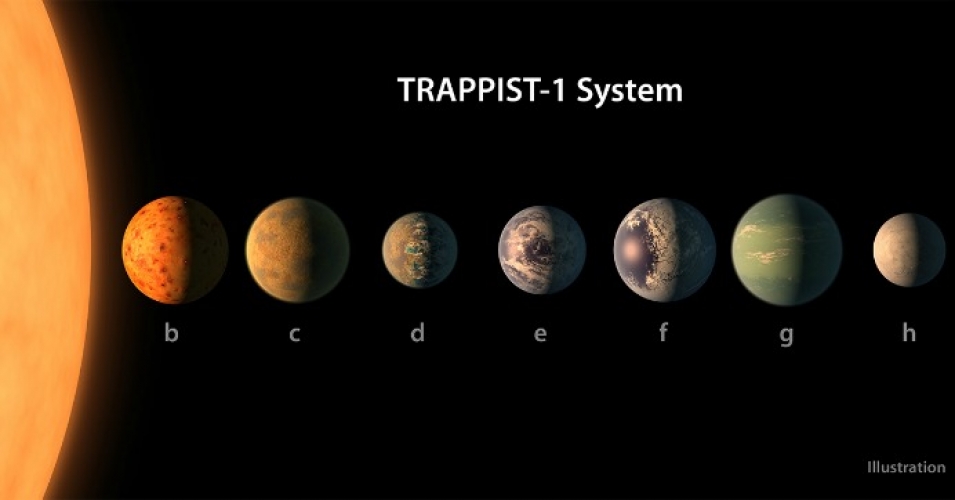GAM 2018 Blog
- Published: Friday, April 06 2018 09:00
By Hatim Madani
|
TRAPPIST-1 system. Credit: NASA Astronomical research is currently focused on the quest for extra-terrestrial life, and unless we discover life on the satellites of some of our planets, it is outside the solar system that we will have to look for traces of life. The discovery in 2017 of the Trappist-1 system hosting seven telluric planets, which was the result of the remarkable work of researchers from many nations among which Morocco (Pr Zouhair Benkhaldoun and the Oukaiemeden observatory’s team); constitutes a historical discovery that rekindled the hopes of detecting extra-terrestrial life. This noble quest driven by the insatiable curiosity of the human being should also encourage us to think about ourselves, as humans and earthlings, about our place and value in this infinite universe. |
|
|
I recently read for the first time the book of Arthur C. Clarke, " 2001 A Space Odyssey", published in 1968 which inspired the fascinating cinematographic blockbuster that I will never tire of watching. I noted an interesting idea of the author that there were more or less 100 billion stars in our galaxy, and that figure was about equal to the number of human beings who lived on Earth, so that for every man shines a star in the sky. This beautiful poetic vision, updated in the light of our current knowledge, invites us to a simple mathematical exercise. We estimate today that there is a minimum of 100 billion galaxies in the observable universe. With an average of 100 billion stars per galaxy we would then get a total of 1022 stars in the observable universe, a dizzying number. For each man it would be rather a galaxy that shines so in the cosmos, or in other words, each man possesses his own galaxy wandering in the universe! We cannot have fun comparing the physical value of a human being to that of a star, as the comparison could seem absolutely disproportionate. But from a purely "economic" point of view, of abundance and scarcity on the cosmic scale, we should come to the evidence that, ultimately, and until proof of the discovery of other intelligent beings in the universe, the value of a man compared to that of a star is extremely high, astronomical we should say... We could also adopt the same approach by comparing this time the number of men to that of the existing planets in the universe, a figure that could possibly exceed that of the stars but this estimate is still difficult to achieve. In 2004, we discovered the exoplanet 55 Cancri e located in the Cancer constellation, which seemed to be mainly composed of diamond. The discovery of this "cosmic treasure" stimulated the imagination of many people. This immense source of wealth, totally inaccessible, was only of value if it was balanced with the scarcity of this ore on Earth. The 55 Cancri system was selected during the Nameexoworlds competition in 2015 and 55 Cancri e planet finally adopted the name of a man, Zacharias Janssen, a Dutch glasses maker and inventor of the first microscope. The night sky is a common heritage of humanity. A unique sky, shared by all the people of the Earth. Those are the same stars that illuminate our nights, whatever our continent, our culture or our language. Astronomy is the science that will enable us to deepen our knowledge of the universe ever further through the common effort of individuals from all nations. It gives us the opportunity to unite around the peaceful purpose of promoting scientific knowledge and safeguarding our only refuge under our motto "One people, One sky". |
|
Master graduate in international business and work in private sector. I was involved in the astronomy field trough amateur astronomers clubs. During IYA 2009 I worked in partnership with the National Commission of UNESCO to launch Aldebaran project (project for the creation of schools astronomy clubs in the country) - /UNAWE Morroco Coordinator/ Astronomers Without Borders Coordinator |
 |










